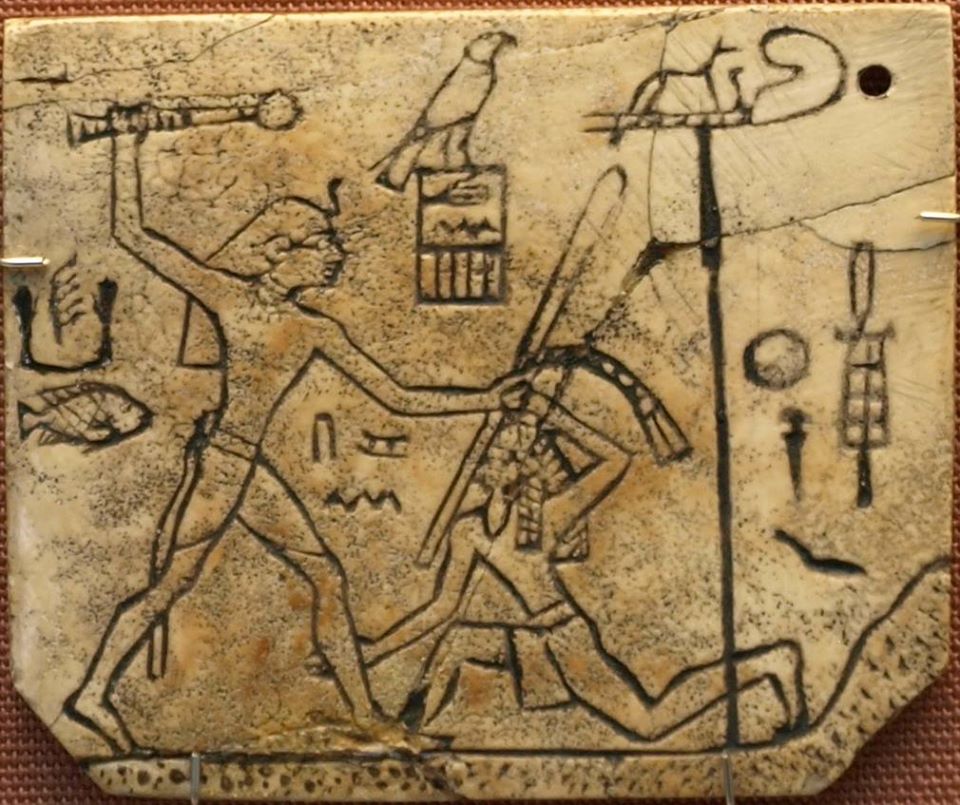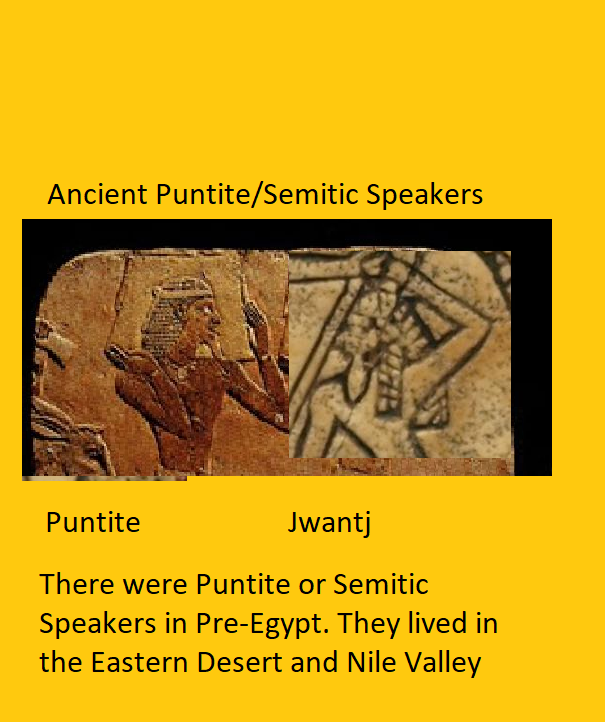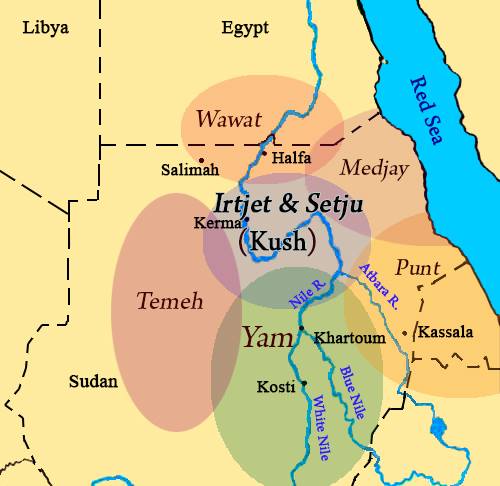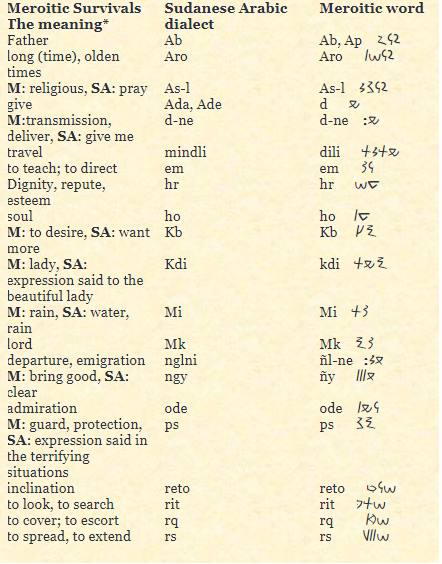The Semitic languages are native to the Nile Valley. As a result, Semitic should be recognized as an African language. I call the Semitic languages Puntite languages.
The Semitic speaking people are native to the Nile Valley and Northeast Africa, they did not originate in Arabia.
The Semitic languages are divided into four groups: North-east Semitic, Northwest Semitic, Southeast Semitic and Southwest Semitic. The Ethiopian Semitic languages belong to the Southeast Semitic subgroup.
In ancient times modern Ethiopia and Somalia was called Punt. As a result I call the Semitic languages of Ethiopia: Puntite languages. In the Sumerian texts these Puntites may have been called Meluhhaites.
The Puntites lived in the Eastern desert of Egypt and Arabia for many years and on the Horn of Africa. The earliest representatives of this group are depicted on the Ivory label of King Dan (Udimu) of the first Dynasty of Kemit.

In the Ivory label of King Dan , we see Dan holding a mace “smiting the enemy”. The people were identified a jwntj.w "people with hunting bows”, and inhabitants of the Eastern Desert. The jewenetejes, were probably Semitic or Puntite speakers . Like the Jewenetejes the Puntites wore beards. The use of the bow by the Jeweneteje suggest that they were related to the Kushites.

The existence of Punt, in areas where Semitic languages is spoken plus several Semitic languages in the Sudan, especially Habesha suggest the presence of Semitic speakers in the Nile Valley since pre-Egyptian times. The Egyptians referred to Punt as "God's Land".

Punt is usually situated by researchers in the Red Sea Coast near the region where the Medjay lived, on into modern Ethiopia. this part of Africa was called Meluhha by the Assyrians.
Much of what we know about Punt comes from the Deir el-Bahri temple , On this mural is depicted the Puntite King Parahu (right) and his wife Ati. Note that King Parahu wears a beard

These areas today are inhabited by Semitic speakers ( Puntites, Habesha and etc). The intimacy between the Puntites and Egyptians make it clear that Semitic speakers were recognized as a respected population related to the Egyptians. This would explain the Semitic speaking populations in the Nile Valley who are not Arabic speakers. This is why I call the African Semitic languages Puntite languages because they were probably formerly spoken by the people of Punt.
The pre-Egyptian presence of Semitic speakers in the Nile Valley is supported by 1) the presence of Habesha and Colloquial Sudanese Arabic (CSA) in the Sudan and Nile Valley; and 2) Semitic loan words in ancient Egyptian and Meroitic.. Is a semitic language but it is not Arabic. If Semitic languages in the Sudan were the result of the spread of Islam, CSA would be an Arabic dialect--but it is not an Arabic dialect.
Anta Diop found an African root at the base of Semitic root words. Dr. Diop noted that the Semitic tri consonant root system is genetically related to the African root words in Semitic.

As a result, I call the Semitic languages Puntite languages. Egyptian and Semitic languages shared grammatical features and cognate. Egyptian Semitic terms were recognized by Erman and Albright (See: A. Erman. 1885. "Das Verhiltnis des Aegyptischen zu den semitischen Sprachen" ,ZDMG,1 XLVI, 9.; and W. F. Albright, Egypto-Semitic Etymology, The American Journal of Semitic Languages and Literatures, Vol. 34, No. 2 (Jan.),pp. 81-98).
CSL and Arabic are two distinct Semitic languages. In modern day Sudan, Colloquial Sudanese Arabic is recognized as a lingua franca or slang language.
Anas Elbashir Ahmed Musa has used comparative linguistic methods to illustrate the genetic linguistic relationship between Old Sudanese Language (Colloquial Sudanese Arabic) and Meroitic. Brother Anas Elbashir has illustrated the continued use of classical Meroitic terms among contemporary Sudanese.
Arabic scholars recognize that CSL is a Semitic language unique to the Sudanese because it has many vocabulary items from Sudanese languages including Nubian, but, especially Beja or Bidaweet.The relationship between Egyptian and Semitic and the Cognate Meroitic-Colloquial Sudanese Arabic or Classical Sudanese Language (CSL) Semitic terms makes it clear the Semitic languages originated in the Nile Valley and expanded from there into Eurasia.
The earliest civilization in Southwest Arabia date back to the 2nd Millenium. This culture is called the Tihama culture which originated in Africa. The people of the Tihama culture included Puntites.
This civilization probably originated in Nubia. It is characterized by the cheesecake or pillbox burial monuments which extend from Dhofar in Nubia, the Gara mountains to Adulis on the Gulf of Zula, to Hadramaut, Qataban, Ausan, Adenm, Asir, the Main area and Tihama.
Brother Anas Elbashir, after comparing Colloquial Sudanese Arabic to words in my Meroitic Word List, has illustrated the continued use of classical Meroitic terms among contemporary Sudanese.
In conclusion the Semitic speakers originated in the Nile Valley. The Puntites like the jwntj.w and other people in the Eastern Desert wore beards .
There was no back migration of Semitic speakers from Arabia into Africa. The migration was not into the Sudan, the Tihama material makes it clear the migration was from the Sudan/Nile Valley into Arabia.

Semitic and CSL are related to ancient Egyptian and Meroitic If the Semitic speakers in the Nile Valley , were due to a back migration from Asia into the Nile Valley Semitic speakers would speak an Arabic dialect instead of CSL.The Puntites were Semitic speakers.

No comments:
Post a Comment